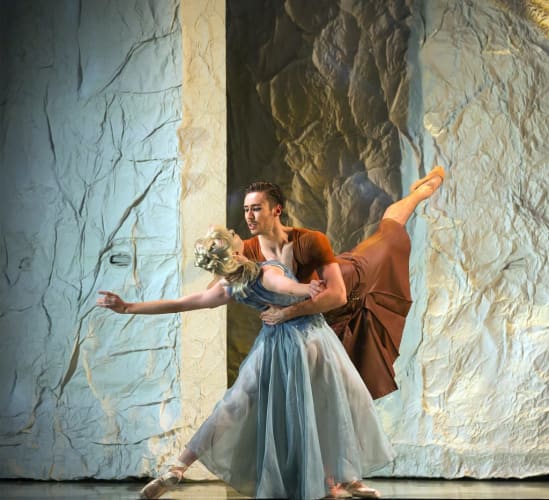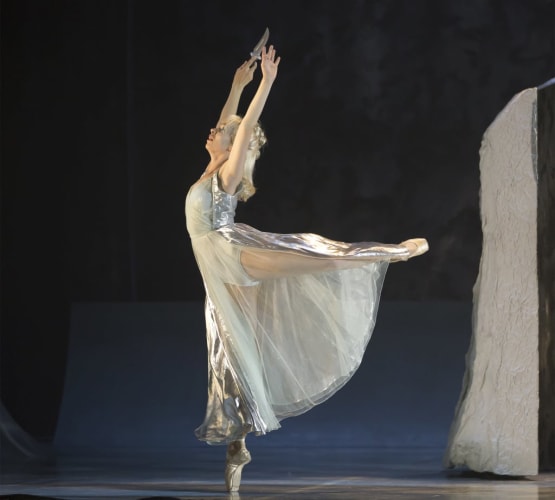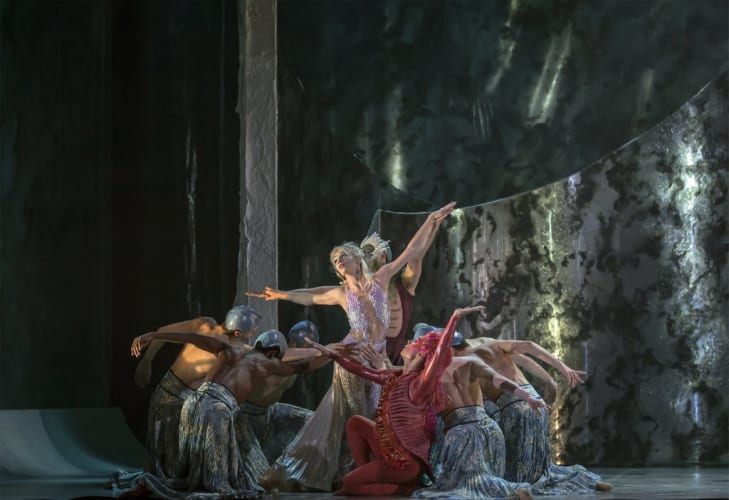Northern Ballet’s The Little Mermaid is a feast for the eye with delicate individual performances by the principal dancers, impressionistic scenes representing the underwater world and lively and well characterised dance sequences by sailors, schoolgirls and courtiers in the human world.
Adapted from the story by Hans Christian Andersen, the new ballet was first performed in October 2017 and has been enthusiastically received ever since. Director and choreographer David Nixon was understandably attracted to the scenario for the contrast it provides between the underwater world and life on terra firma and particularly the challenge it presents in giving balletic form to waves and shipwrecks as well as the apparently effortless swimming of the underwater creatures.
The moralistic tale is about love and self-sacrifice. Marilla, the Little Mermaid, rises to the surface of the sea where she falls in love with Prince Adair and saves his life when his ship is wrecked. She persuades her father, Lyr, Lord of the Sea, to give her a potion which will allow her to join the human community. Lyr reluctantly agrees but the price she has to pay is that she will be unable to speak and that walking will be incredibly painful.
Marilla is heartbroken when Adair marries Dana, and when she decides to return to the sea, Lyr will only permit this if she kills her prince. This she cannot do and sacrifices herself for love.
The visual aspects of the production are stunning. Kimie Nakano’s adaptable set, supplemented by Tim Mitchell’s effective lighting design and Julie Anderson’s fluid costumes, effectively suggest the underwater world and with minimal adjustment also represent the storm tossed ship and white cliff walls.
Abigail Prudames is a lithe and beautiful Marilla, who rises and weaves almost effortlessly in the water, and clearly communicates the appalling pain she suffers when she first tries to walk in human form.
Joseph Taylor is superb as Prince Adair. In addition to the challenging choreography in which support has to appear effortless he is entirely in character throughout and delightful in the pas de deux with Prudames. He has complete rapport with Sarah Chun who is charming as the young girl he falls in love with.
There are good performances in supporting roles. Filippo Di Vilio finds the comedy in role of Dillon the seahorse, Marilla’s best friend, and his lobster coloured costume provides a strong colour contrast in the early scenes. Sean Bates is a commanding presence as Lyr, the villain of the piece.
The large corps de ballet in its various manifestations is at the heart of this production and Nixon’s choreography finds opportunities for a light touch and humour. The vigorous sailors’ dance is a delight as is the later scene when suppressed schoolgirls are ineffectively shepherded by two nuns.
There are also scenes of high drama as in the sinking of the ship when drowning sailors stretch out desperate hands for help. As in all of these sea-related scenes, it is the support provided by members of the corps which create the illusion of swimming or drowning.
This is an exciting production in which the fairly complex story line is made very clear by the use of mime, and the large corps de ballet scenes, in the sea and on land are extremely effective.


